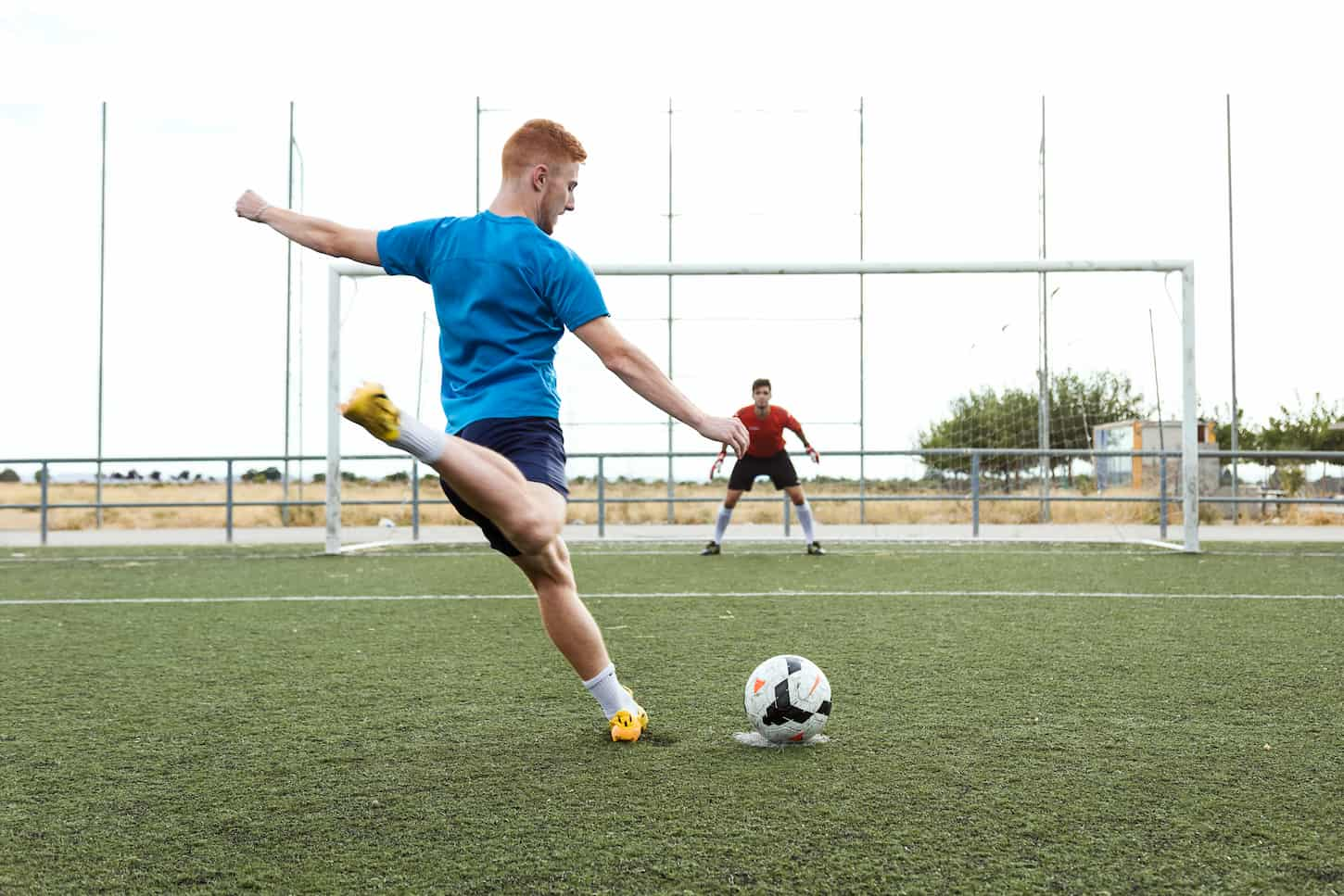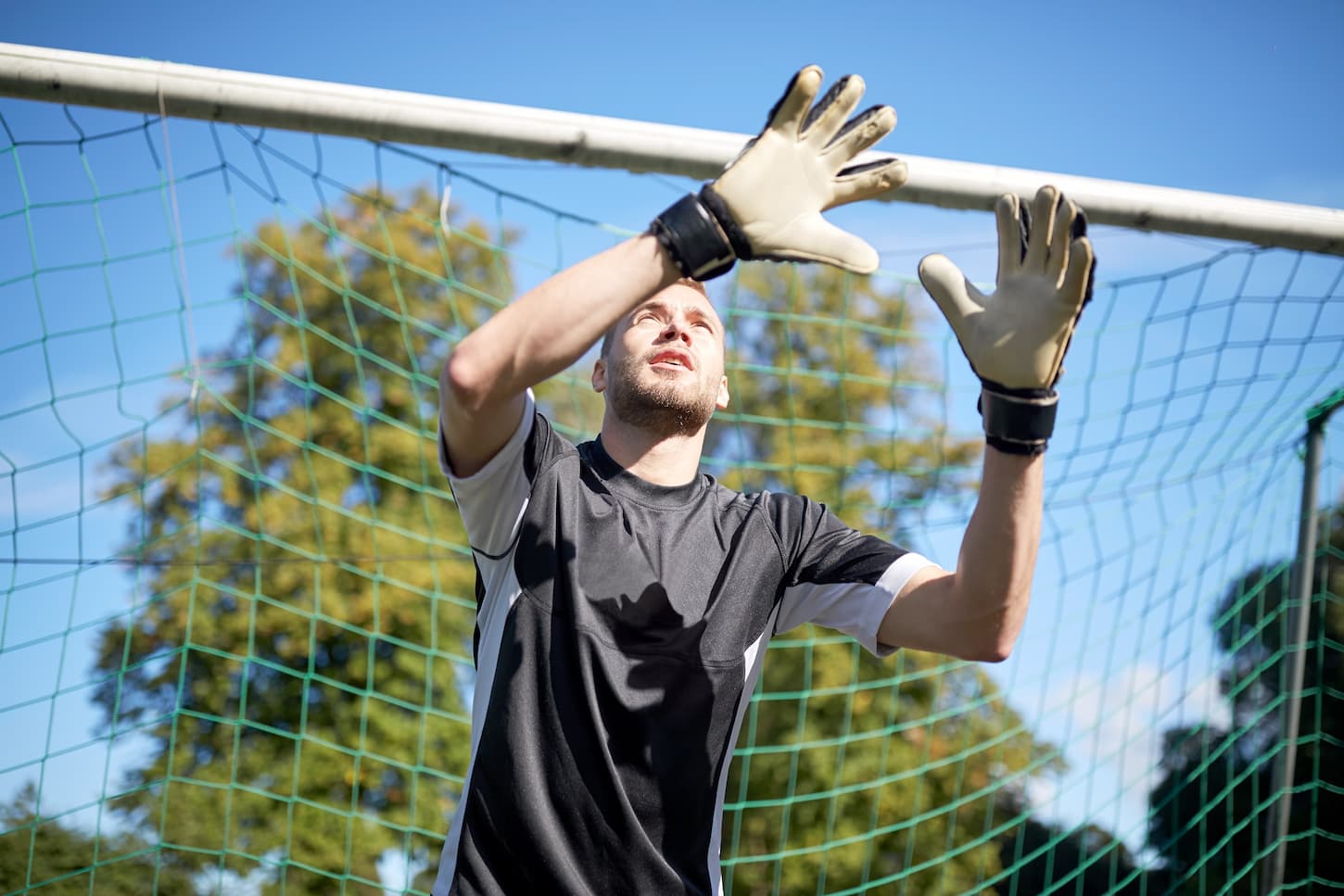If someone watches a lot of soccer, they may have noticed something a little strange going on near the goals. When goalkeepers (otherwise known as ‘goalies’) catch the ball, they often bounce it on the ball before finally passing outfield to another player.
Goalkeepers can bounce the ball before choosing to kick or throw it to an outfield player. FIFA laws allow a goalkeeper to hold onto the ball for a maximum of six seconds. While a ball is bounced, it is considered to be in control of the goalkeeper.
However, why do they do this? Is this in fact, within the rules of the game? Is there any benefit to doing so, and is there anything to stop another player from stealing the ball while they do it?
Well, as it turns out, there are a couple of reasons for doing this! Read on below to find out how this relates to the rules and traditions of soccer, and see how that fits in with your games.

Can a Goalie Bounce the Ball Before Kicking It?
Goalies today keep up the tradition by bouncing the ball – a goalie may control the ball for six seconds before passing it on or sending it up the pitch. This is known as the six-second law.
Holding onto the ball indefinitely would be considered too time intensive. Instead, this law is replaced with what’s known as the six-second law. This means that goalkeepers may control the ball for just six seconds before passing it or sending it up the pitch.
This law is partly an extension of an older tradition, where goalies were allowed to hang onto the ball for as long as they liked, as long as they bounced it regularly (a similar law to those in some games such as Gaelic football).
Bouncing the ball still counts as controlling the ball, which prevents an opponent from being able to steal it.
Because of this, goalies today still keep up the tradition by continuing to bounce the ball, but there’s little benefit in doing so other than maybe giving them a little comfort after a hair-raising save!
Of course, some goalkeepers try to push the limits of the six-second law to get their teams an advantage.
In 2015, Liverpool FC goalie Simon Mignolet tried to waste time in a tense Europa League game by holding onto the ball for a full 22 seconds! (It backfired, as Bordeaux was awarded an indirect free-kick that they scored with).
For someone just getting into the nitty-gritty of what’s allowed, then this next bit is perfect!
Here’s how the International Football Association Board defines what the goalie can and can’t do inside the penalty area (the most relevant details are in bold, and the full pdf is available here).
An indirect free kick is awarded if a goalkeeper inside their penalty area commits any of the following offenses:
- Controlling the ball with the hand/arm for more than six seconds before releasing it.
- Touching the ball with the hand/arm after releasing it and before it has touched another player.
- Touching the ball with the hand/arm, unless the goalkeeper has kicked or attempted to kick the ball to release it into play; after it has been deliberately kicked to the goalkeeper by a team-mate, or receiving it directly from a throw-in taken by a team-mate.
A goalkeeper is considered to be in control of the ball with the hand(s) when:
- The ball is between the hands or between the hand and any surface (e.g. ground, own body) or by touching it with any part of the hands or arms, except if the ball rebounds from the goalkeeper or they have made a save.
- Holding the ball with an outstretched open hand.
- Bouncing it on the ground or throwing it in the air.
- A goalkeeper cannot be challenged by an opponent when in control of the ball with the hand(s).
Frustratingly, there are quite a few goals on highlight reels that seem to contrast the laws as stated above (with players stealing the ball from the goalie while bouncing it/throwing it in the air).
However, now that the strict rules are known, you’ll at least be able to argue the legality of these with friends from a knowledgeable standpoint!
Can a Soccer Goalie Drop the Ball and Pick it Back Up?
According to the laws of soccer, a goalie may not pick up the ball after releasing it before it touches another player. If they were in control of the ball and then they drop the ball by mistake, then they’ll have to deal with it without using their hands.
This law only applies as long as they were already in control of the ball (see above for the strict definition of this as dictated by the International Football Association Board).
A goalie may regather the ball after a rebound from a save or a touch of the ball that isn’t deemed to be in control.
Can a Goalie Bounce the Ball Before Kicking it in Youth Soccer?
Goalies may bounce the ball in youth soccer before kicking it. Since 1904, the International Football Association Board has set the laws of soccer for all levels of the game, which means that, by default, the same laws should apply in youth soccer as in professional games.
It is, however, possible in some cases for youth teams or other organizations to change the laws of soccer for certain matches, either to simplify them for new players, or for other reasons such as safety concerns (there have been experiments recently, for example, outlawing heading the ball).
It’s pretty unlikely that this would be a law that would change, but if it’s a concern then maybe check with your local league.
Bear in mind though that at a youth game, it’s likely that the referee is amateur and possibly inexperienced. While you have a pretty definitive explanation of these laws now, people do make mistakes (especially young players and inexperienced referees).
Always be thankful for the volunteers that show up to officiate these games, as it’s a crucial role that can be thankless work!
When Can The Goalie Not Bounce The Ball?
According to the laws of soccer, a goalie may not bounce the ball after six seconds of being in control of it. They also must not handle the ball when doing so would break the ‘pass-back’ rule.
The pass-back rule is fairly simple; a goalie may not handle the ball when it is passed to them by a player of their team within the larger goalkeeper box (the area in which they may use their hands to control the ball).

Key Takeaways and Next Steps
Soccer can be a confusing sport, and there are some surprising laws of the game out there. Goalkeepers can bounce the ball before choosing to kick or throw it to an outfield player, and goalies today keep up the tradition by bouncing the ball; they may control the ball for up to six seconds.
The goalie may not pick up the ball after releasing it before it touches another player, and in youth soccer, goalies may bounce the ball before kicking it.
Soccer is a fun game to watch and play, and knowing all of these little rules about the game can help.
For some more great information on soccer, read these great articles:
- Can Soccer Goalies Wear Sunglasses? Guidelines For Protective Gear
- Do You Have To Volunteer As The Soccer Coach?
- Is it Safe to Play Soccer in The Rain? 7 Practical Techniques
Resources
Learning from your own experiences is important, but learning from others is also smart. These are the sources used in this article and our research to be more informed as a family of sports nuts wannabes.
- “Football: Five Rules You Might Not Know About – CBBC Newsround.” BBC Newsround, 15 Nov. 2018, www.bbc.co.uk/newsround/46207267.
- The International Football Association Board. “Laws of the Game 2020/2021.” Digitalhub.Fifa.Com, 1 June 2020, digitalhub.fifa.com/m/5371a6dcc42fbb44/original/d6g1medsi8jrrd3e4imp-pdf.pdf.
